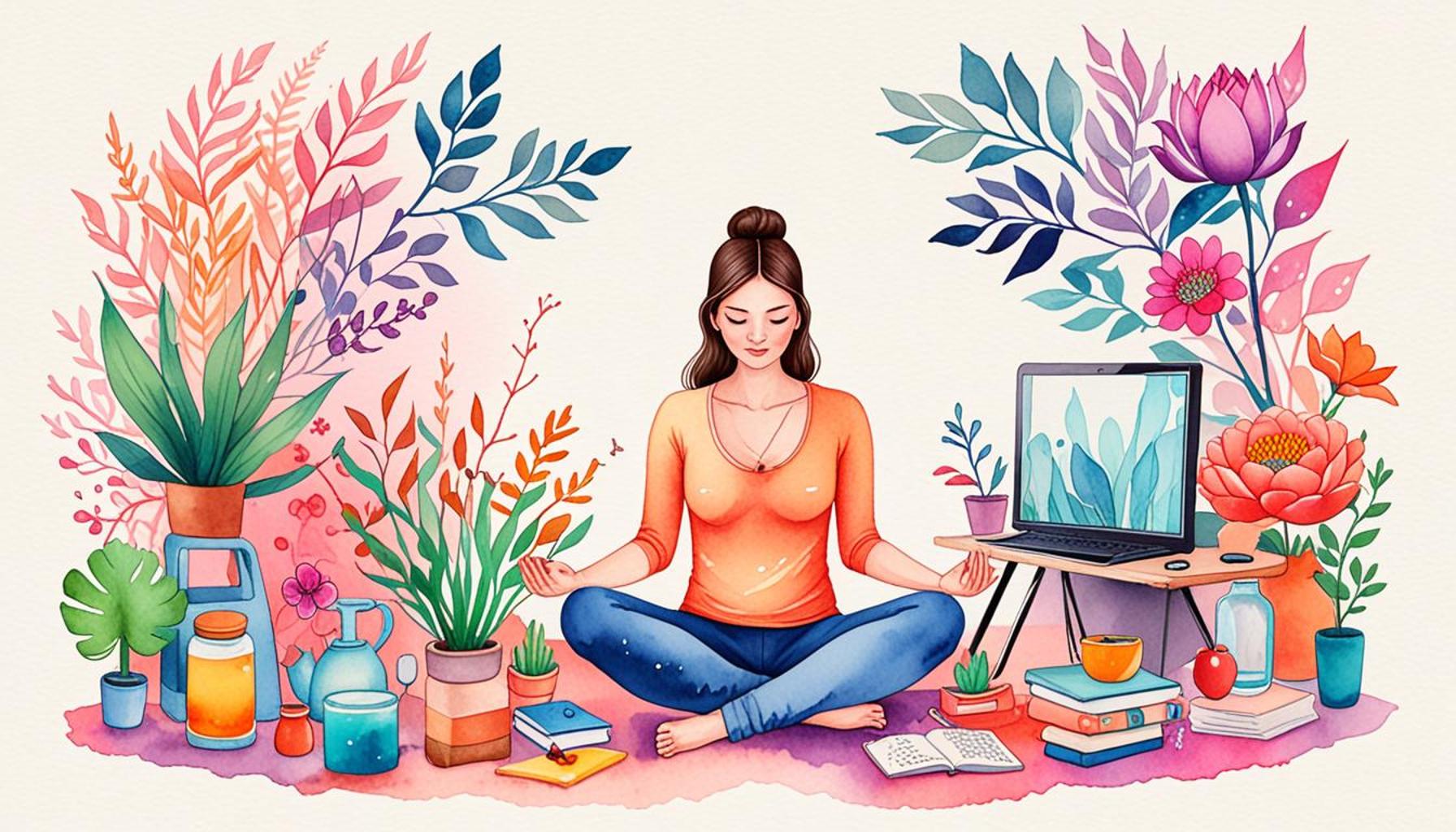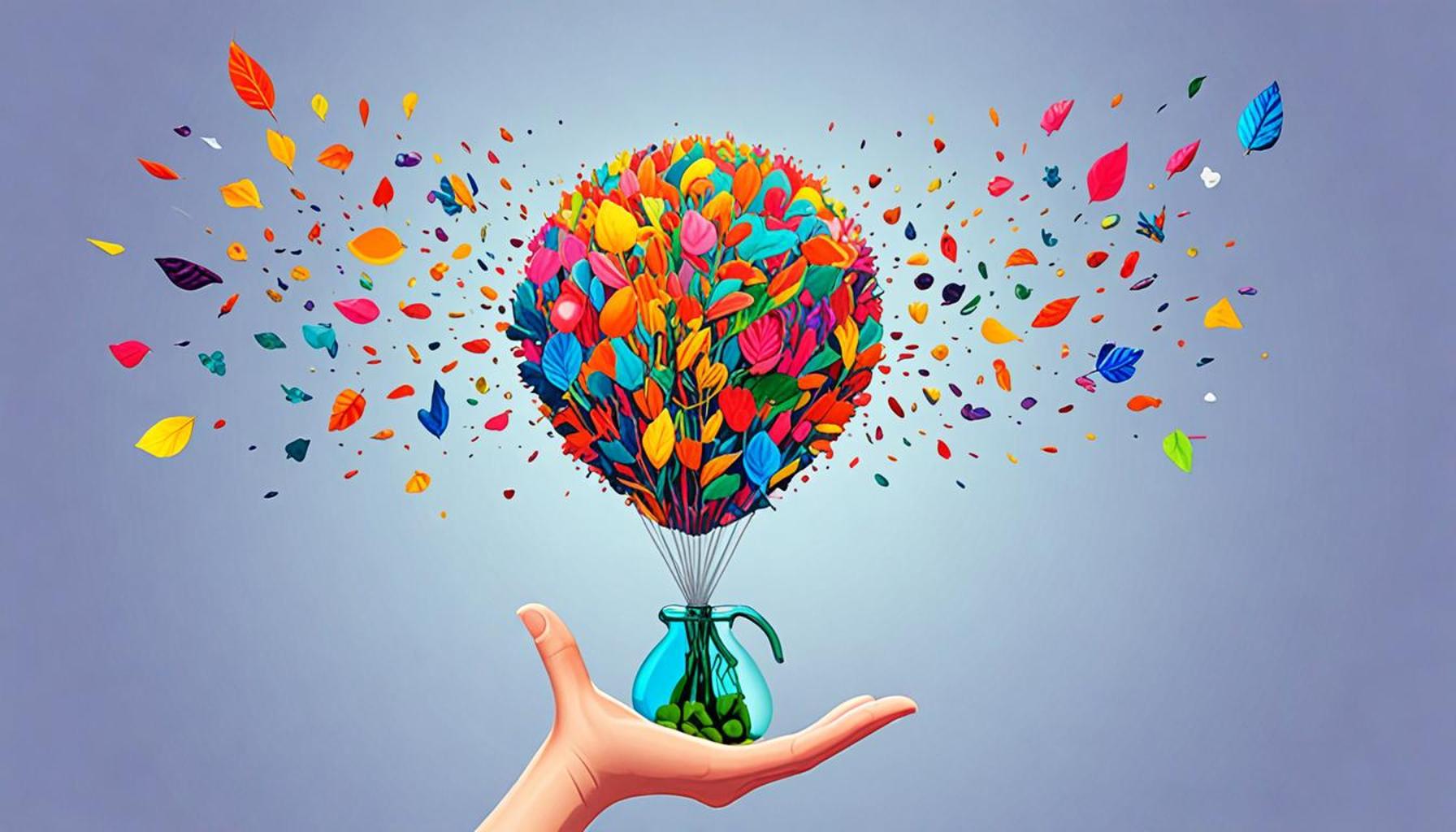Mindful Living and the Importance of Digital Disconnection in Personal Organization

Embracing Mindfulness in a Digital World
In today’s fast-paced society, the endless stream of information and notifications can feel overwhelming. With every beep of our smartphones and the continuous scroll of our feeds, the devices initially designed to connect us often contribute to a state of stress and disorganization. To counteract this, adopting a practice of mindful living can empower us to reclaim control over our lives, improve our mental health, and enhance overall personal organization.
The Benefits of Digital Disconnection
Disconnecting from digital distractions isn’t merely about stepping away from technology; it’s a profound practice that can result in numerous benefits. These benefits extend beyond personal comfort, influencing various aspects of our lives:
- Improved Focus: When we eliminate distractions, we can concentrate more effectively on tasks that truly matter. This heightened focus can lead to increased productivity, whether in the workplace or during personal projects. For instance, studies show that time spent away from screens can enhance cognitive performance, allowing individuals to engage in deeper problem-solving.
- Enhanced Creativity: Taking breaks from digital stimuli often ignites the imagination. Many creative professionals, including writers and artists, have found that stepping outside for a walk or engaging in art away from screens inspires fresh ideas. The brain’s ability to relax and wander during these moments can often lead to breakthroughs.
- Healthier Relationships: Quality time spent away from devices creates an opportunity to nurture relationships with family and friends. Imagine dining without phones at the table, where genuine conversations and face-to-face interactions can flourish, leading to deeper emotional bonds.
Why Mindful Living Matters
Incorporating mindfulness into our daily routines enables us to regain control of our mental health. Research has illustrated that mindfulness practices, such as meditation and yoga, can notably reduce anxiety and depression levels. The effort to disconnect fosters a more intentional and organized life, transforming how we approach daily responsibilities.
As we delve into the relationship between mindful living and digital disconnection, various strategies can help us cultivate a more purposeful existence. These strategies might include setting designated “tech-free” times during the day or creating a calming nighttime ritual that limits screen exposure. Such practices not only bring more peace to our minds but can also significantly enhance our organization, as we redirect our energy toward what truly matters in our lives.
Join us on this enlightening journey toward a more mindful approach in a digitally dominated world. By prioritizing our mental well-being and personal connections, we can create a fulfilling life that empowers us, allowing us to both embrace the conveniences of technology and enjoy the tranquility of our surroundings.

DIVE DEEPER: Click here to uncover more insights
Strategies for Cultivating Mindfulness in a Digital Age
As we navigate the complexities of modern life, particularly marked by the incessant pressure of technology, integrating mindfulness into our routines can seem daunting. However, simple strategies can significantly foster a more organized and tranquil existence. By actively creating moments of digital disconnection, individuals can nurture a greater sense of awareness and presence. Here are some actionable techniques to incorporate mindful living into daily practices:
- Establish Tech-Free Zones: Designate specific areas in your home, such as the dining room or bedroom, as tech-free zones. This allows you to focus on engaging with your family or enjoying personal reflection without the constant interruption of notifications and screens.
- Schedule Digital Detox Days: Allocate one day a week as a digital detox day, where all devices are set aside. Use this time for outdoor activities, reading, or practicing hobbies that foster engagement with the real world rather than the virtual.
- Mindful Morning Routines: Start your day with a mindful morning routine that excludes digital devices for the first hour upon waking. Use this time for meditation, journaling, or gentle exercise to cultivate a sense of clarity for the day ahead.
- Use Technology Mindfully: When technology is necessary, apply the principles of mindful use. This could involve checking emails at set times instead of constantly scanning your inbox, or turning off non-essential notifications that disrupt your focus. Consider using apps designed to promote productivity and mindfulness.
- Practice Gratitude Journaling: At the end of each day, take a moment to reflect on what you are grateful for and jot these down in a journal. This practice encourages mindfulness and helps in re-centering your focus on positive aspects of your life.
Implementing these practices can gradually reshape your relationship with technology, allowing for a more mindful presence that enhances personal organization. Furthermore, as technology continues to evolve, the need for a deliberate, conscious approach to its use becomes ever more critical. Rather than being passive consumers, individuals can place themselves in control of their digital experiences, crafting a balanced interaction that respects both mental health and productivity.
As we explore the interplay between mindfulness and digital disconnection, it becomes clear that the journey toward a fulfilling life does not necessitate rejecting technology entirely. Instead, the goal lies in finding harmony between the advantages modern technology provides and the tranquility that comes from being present in the moment. The awareness of this balance encourages a lifestyle centered on intention, ultimately fostering a more organized and peaceful existence amidst the digital clamor.
| Advantages | Impact on Personal Organization |
|---|---|
| Enhanced Focus | By disconnecting digitally, individuals can achieve greater concentration on tasks without the distractions of notifications and alerts. |
| Reduced Anxiety | Taking time away from screens has been shown to lower stress levels, leading to a more organized mind and enhanced productivity. |
| Improved Relationships | Digital disconnection encourages face-to-face interactions, fostering deeper connections and improving communication skills. |
| Time Management | By prioritizing mindful living, individuals can allocate time more effectively, leading to better organization of personal and professional tasks. |
As we further explore the concept of mindful living, it becomes evident that disconnecting from digital devices is not just a temporary retreat; it’s a significant lifestyle adjustment. The act of stepping back from screens allows for reflection and a deeper understanding of one’s priorities. This insight can lead to substantial transformations in how personal organization is approached.In essence, the synergy between mindfulness and digital disconnection presents a compelling case for enhancing not only productivity but also overall well-being. Those who embrace this practice often report unexpectedly high levels of satisfaction and clarity. This aligns with studies showing that reduced screen time correlates with heightened creativity, allowing individuals to engage more fully in their personal and professional lives. Additionally, consider incorporating techniques like digital detoxes or scheduled screen breaks into your routine—methods that many have found beneficial in reclaiming their time and space.
DISCOVER MORE: Click here to simplify your to-do list
The Impact of Digital Disconnection on Personal Effectiveness
While the pervasive influence of technology undeniably offers numerous benefits, its extensive use can lead to overwhelming distractions and diminished productivity. Embracing digital disconnection can significantly counteract these effects, allowing individuals to harness their full potential. Studies indicate that the average adult in the United States spends roughly 11 hours a day interacting with digital media. This heavy screen time can detract from mental clarity, hinder creativity, and compromise emotional well-being. By deliberately stepping back from screens, people can experience heightened focus and a restored sense of purpose.
One area significantly affected by constant digital engagement is task management. Individuals often struggle with juggling multiple responsibilities, primarily due to the fragmented attention caused by digital distractions. In contrast, a digital detox allows for undiluted concentration on tasks at hand, promoting greater efficiency. For instance, research from Stanford University suggests that multitasking can reduce productivity by as much as 40%. By adopting a mindful approach to completing tasks without the interference of digital alerts, individuals are likely to experience deeper engagement and effectiveness in their work.
Enhancing Creativity through Mindfulness
Interestingly, mindful living and digital disconnection can nurture creativity—an essential element for personal growth and problem-solving. When people take time away from screens, they often find themselves immersed in their thoughts and surroundings, sparking inspiration that may have otherwise remained dormant. Activities such as walking in nature, painting, or simply allowing the mind to wander can cultivate a rich environment for creative thought. A 2014 study published in the journal “Psychological Science” found that engaging in activities that promote disconnection from digital devices can enhance creative thinking significantly. This revelation emphasizes the importance of balancing technology use while embracing mindful moments.
Moreover, the ability to disconnect from technology serves as an avenue for reflection and self-assessment. By intentionally stepping away from screens, one creates an opportunity to evaluate personal goals and priorities. This introspective process can significantly contribute to better personal organization. Tools such as vision boards and mindfulness journals can help prioritize thoughts and streamline one’s objectives in tandem with sustained focused energy.
Practical Implementation of Mindful Living
Implementing strategies for digital disconnection does not have to be a drastic shift. Consider integrating small yet impactful changes into everyday life. For instance, one can utilize a technique called the “Pomodoro Technique,” where work is achieved in focused intervals of 25 minutes, followed by short breaks. During breaks, individuals can engage in mindful practices such as deep breathing, stretching, or even a short walk—activities that do not involve screens. Incorporating such practices fosters a deeper sense of awareness, allowing one’s mind to recharge and ultimately enhancing personal organization.
Furthermore, mindfulness applications like Headspace or Calm have gained popularity, teaching users how to focus on their breath and center their thoughts effectively. Ironically, incorporating such technology to promote disconnection creates a paradoxical yet harmonious relationship between mindfulness and digital engagement, ultimately serving the very purpose of enhancing personal organization.
In a world inundated by technology, championing mindful living and embracing moments of digital disconnection can pave the way for enhanced clarity, productivity, and overall well-being. By nurturing this balance, individuals can not only organize their lives effectively but also rediscover the tranquility that often lies beyond the digital noise.
DISCOVER MORE: Click here to learn about organizing seasonal items
Conclusion
In our fast-paced, digitally-driven world, the need for mindful living and occasional digital disconnection has never been more critical. The continuous barrage of notifications and information can cloud our mental clarity, impede creativity, and hinder our ability to organize personal and professional tasks effectively. Through the thoughtful practice of stepping back from screens, individuals open themselves up to profound benefits that can enhance both productivity and emotional well-being.
Embracing digital disconnection allows us to reclaim precious time for self-reflection and creative inspiration—elements often stifled by the noise of constant digital engagement. As noted in various studies, this shift can lead to significant improvements in task management and overall efficiency. By integrating small yet impactful changes into our daily routines, such as utilizing focused work intervals or engaging in mindfulness practices during breaks, we can dramatically improve our personal organization.
Moreover, the exploration of our natural surroundings or engaging in creative hobbies not only evokes a rejuvenated sense of purpose but also fosters essential skills that contribute to personal growth. The juxtaposition of technology and mindful living may seem paradoxical; however, when approached thoughtfully, it can yield a harmonious balance that enhances our overall quality of life.
As we navigate the complexities of modern living, prioritizing moments of intentional disconnection offers a path to a more organized, creative, and fulfilling existence. Therefore, consider exploring this vital aspect of personal organization—where less truly can lead to more—and step into a life enriched by mindfulness and clarity.


